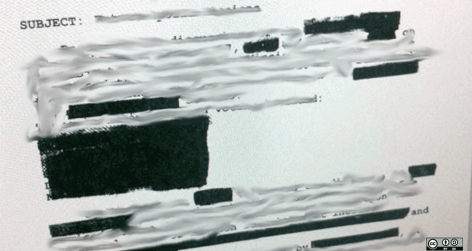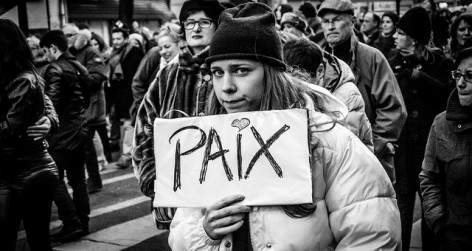Only 17% of rural India has internet access. But citizen journalism is giving voice to minorities says Arpita Biswas.

Only 17% of rural India has access to the internet, according to a 2017 report by the Internet and Mobile Association of India. This is a staggering contrast to the 60% of urban Indians who have internet access. More surprisingly perhaps, women only make up for 29% of India’s internet users. Studies have shown that the digital divide is not just between rural and urban India, but also between men and women. This divide prohibits marginalised communities from experiencing the benefits of digital speech and weakens their ability to contribute to India’s democracy yet government initiatives which have sought to solve this problem have been ineffective and are in dire need of upheaval.
There have been a few government programmes which have sought to rectify this divide. The Digital India programme was one such initiative which aimed to make government services accessible digitally across the country. A key part of this programme, the Universal Access to Mobile Connectivity Initiative, has attempted to provide mobile connectivity to 55,000 villages that do not currently have coverage. The Public Internet Access Programme meanwhile has attempted to facilitate digital services in rural areas such as e-banking, the creation of ration cards, the payment of utility bills, land records and exam results through post offices and the creation of Common Services Centres (CSCs). The reach of schemes such as the provision of fibre-optic cables may appear helpful but has not proven to be the best way of reaching those worst affected by a lack of access to the internet.
Private organisations have also been developing web-based platforms that aim to increase internet access. In 2016, Chinmayi Arun and Siddharth Manohar, in The Good Life in Asia’s Digital 21st Century, argued that the growth of web-based platforms in India has made it is more difficult for the government to control historical narratives and news which is critical of policy initiatives. These platforms were united by their desire to facilitate access to the public sphere for marginalised communities, for example through citizen journalism apps like Gramvaani and CGNet Swara.
Greater internet access has proven to be an essential ingredient for political movements across India. Tools such as live-streaming allows marginalised communities to broadcast uncensored versions of their lives and is a means of circumventing conventional narratives in the media. Citizens have taken recourse to the internet to air their grievances about communal and political violence in rural India. Digital connectivity is therefore crucial in ensuring well-informed democratic debate within India.
One of the first and most popular examples of citizen journalism in India is of Merinews.com. Established in 2006, this website provides a platform to share news and opinions from local communities. Users send in articles, which are edited by the staff at Merinews. Representatives of the website argue that this form of unfiltered journalism helps to “gauge people’s moods” across the country. This digital divide was highlighted during the peak of Anna Hazare’s popularity in 2011. One of India’s most prominent social activists, Hazare campaigned for rural development and for the punishment of corrupt government officials, though his views were dismissed as extreme in the conventional media.

Interior of a Digital India bus during the exhibition at the Golden Jubilee Celebration of the Mobile Science Exhibition in Kolkata in 2015. (Photo by Biswarup Ganguly) Image in the Public Domain. Image link: http://bit.ly/2itQ8kz
Citizen journalism portals are also important for promoting the voice of specific regions of India. Manipur Online, E-Pao and The Sangai Express for example, all focus on issues concerning India’s North-Eastern states. Manipur Online was specifically established because of the upheaval caused by the ceasefire agreement with Nagaland and the central government. This has helped expose politicians to public scrutiny, as was the case of Shahjahanpur Samachar, a citizen journalism initiative established in Uttar Pradesh by Jagendra Singh on Facebook. Singh discussed the close ties that some members of the legislative assembly had with illegal sand mining projects on his Facebook page. The threat such journalism poses to those in high office was highlighted by a horrid turn of events. Singh was set on fire, which was allegedly because of his exposure of the members of the legislative assembly.
Online private initiatives have been successful in using a variety of media to empower minority voices. One prominent example of this is Dalit Camera, a YouTube channel focused on telling stories about the historically oppressed members of the Dalit community, which was launched in 2014, by a student in Hyderabad named Bathran Ravichandran. The channel quickly gained notoriety for its videos discussing instances of sexual harassment experienced by women from marginalised communities. In 2016, an interview with a student from the English and Foreign Languages University at Hyderabad was uploaded. The student, Munavath Sriramulu, used the platform to talk about his experiences with casteism at the university. Sriramulu discussed what he believed to be discriminatory behaviour towards lower caste students by one faculty member. The alleged discrimination led to Sriramulu filing a case against this faculty member under the 1989 Scheduled Castes and Scheduled Tribes (Prevention of Atrocities) Act. As a result, the faculty member in question filed a case of defamation against five students, including Sriramulu. In December 2016, the faculty member won the defamation case and cited the videos as one of the pieces of evidence. In January 2017, the channel was shut down by YouTube, citing claims of copyright infringement. This sudden shutdown was criticised for delegitimising the scarce platforms minority communities have at their disposal.
A few commentators believe that free speech is restricted in India when minority communities are protected. In a 2016 report by Human Rights Watch, protective sections of the 1989 Scheduled Caste and Scheduled Tribes (Prevention of Atrocities) Act were deemed “vague and overbroad”. Section 3(1)(x) was used to prosecute Ashis Nandy, a public figure who made derogatory comments about Dalits. Without a platform for Dalit communities to express themselves, this narrative might not shift soon.
Digital platforms are essential so that minority communities can raise concerns, voice their opinions and freely participate in democratic debate. Government initiatives however, have retained their focus on other aspects of development. The state of Karnataka, for instance, has been working on an app that would host “50 government services, geared towards…development” and aimed towards the Dalit and Adivasi communities. In December 2016, yet another large scale government initiative called BHIM was launched to make digital transactions a possibility for marginalised communities. These schemes need to focus on improving connectivity for communities which have been historically marginalised.
Measures by the Indian government are significant but it also need to acknowledge and protect private initiatives in the future. The protection of platforms of free speech, where minority groups and communities can express themselves online, are the need of the hour. With appropriate infrastructural support, the efficient execution of these platforms would become a possibility. Legal safeguards protecting initiatives like Dalit Camera are needed to ensure that the voices of marginalised communities are bolstered. With both the infrastructure and these safeguards on free speech, web-based platforms can help combat these deep digital divides in India.
Arpita Biswas is a Programme Officer at the Centre for Communication Governance, New Delhi, which specialises in communication law and policy.






















